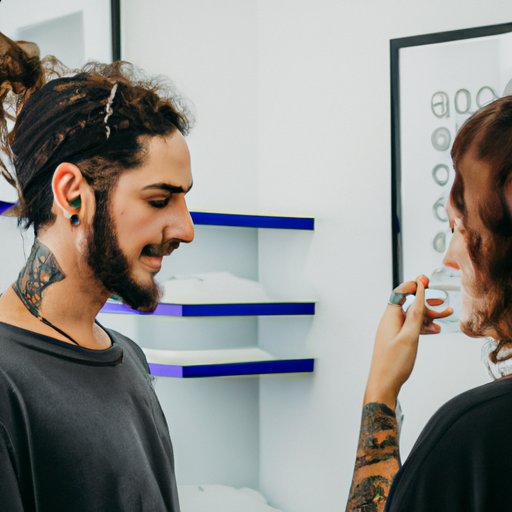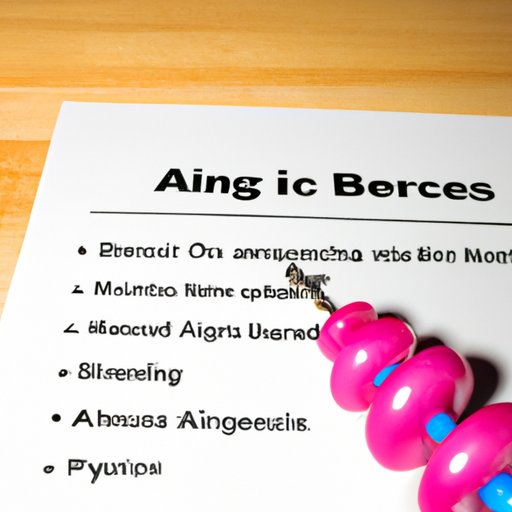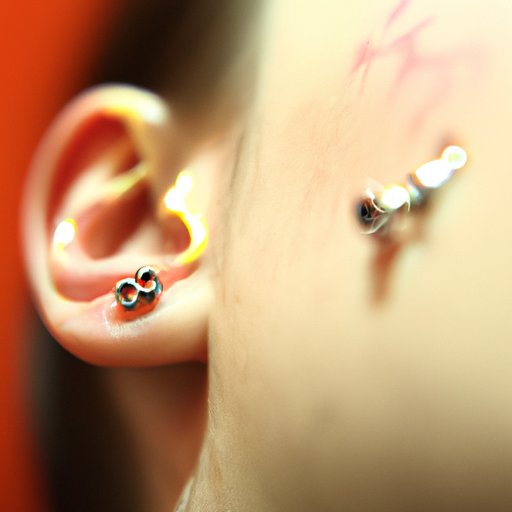Introduction
A piercing is the process of puncturing or cutting a hole in the body for the purpose of inserting jewelry or another ornamentation. This practice has been popular for thousands of years and continues to be a popular form of self-expression today. There are many different types of piercings available, and each one carries its own unique set of risks and potential benefits. This article explores how much each type of piercing typically costs, as well as the factors that affect the price of a piercing and where to get piercings done safely.
Comparing Piercing Costs by Type of Piercing and Body Part
The cost of a piercing can vary greatly depending on the type of piercing and the body part being pierced. Some of the most common types of piercings include earlobe piercings, nostril piercings, lip piercings, eyebrow piercings, and navel piercings. Prices for these piercings can range from $20 to $100 or more, depending on the location where the piercing is performed.
In addition to the type of piercing and body part, there are several other factors that can affect the cost of a piercing. These include the materials used, the skill of the piercer, and the type of jewelry chosen. For example, a basic earlobe piercing may cost less than a complex cartilage piercing because it requires less skill and fewer materials. Higher quality jewelry will also cost more than lower quality options.
According to a survey conducted by Statista, the average cost of a piercing in the United States is $42. However, prices can vary significantly depending on the type of piercing and the location where the piercing is performed. The following table shows the average cost of some of the most popular piercings:
| Type of Piercing | Average Cost (USD) |
|---|---|
| Earlobe | $20 – $50 |
| Nostril | $30 – $60 |
| Cartilage | $40 – $90 |
| Lip | $50 – $100 |
| Eyebrow | $30 – $80 |
| Navel | $30 – $90 |
Exploring the Factors That Affect Piercing Prices
As mentioned above, there are several factors that can affect the cost of a piercing. Understanding these factors can help you make an informed decision about where to get your piercing done and what type of jewelry to choose. Below is a breakdown of the most important factors that can affect the cost of a piercing.
Location
The location of the piercing studio can have a major impact on the cost of a piercing. Generally speaking, piercings done in larger cities and metropolitan areas tend to be more expensive than those done in smaller towns and rural areas. Additionally, piercings done in upscale salons and studios tend to cost more than those done in basic tattoo parlors.
Materials Used
The type of materials used in a piercing can also affect the cost. For example, titanium jewelry is more expensive than stainless steel jewelry, and gold jewelry is more expensive than silver jewelry. The type of material used can also affect the healing time and potential risks associated with the piercing.
Skill of Piercer
The skill of the piercer can also affect the cost of a piercing. Experienced piercers tend to charge more for their services because they have more knowledge and expertise. It’s important to do your research and find a reputable piercer who is experienced and knowledgeable about the type of piercing you’re interested in.
Jewelry Choice
The type of jewelry chosen for a piercing can also affect the cost. Jewelry made from higher quality materials such as gold or titanium will cost more than jewelry made from lower quality materials such as stainless steel or silver. Additionally, custom jewelry tends to cost more than pre-made jewelry.

Investigating Piercing Prices at Different Locations
As mentioned above, the cost of a piercing can vary significantly depending on the location where the piercing is performed. To get an idea of the differences in cost between different locations, it’s helpful to compare prices at different studios. The following table shows the average cost of piercings at three different locations:
| Location | Average Cost (USD) |
|---|---|
| Tattoo Parlor | $20 – $50 |
| Upscale Salon/Studio | $50 – $100 |
| Medical Facility | $100+ |
Getting a piercing at a tattoo parlor is usually the least expensive option, but it also carries the most risk. Tattoo parlors often use lower quality materials and may not follow the same safety standards as a medical facility. Upscale salons and studios tend to offer higher quality services and use better materials, but they also tend to be more expensive. Medical facilities are the safest option, but they are also the most expensive.

Examining the Pros and Cons of Getting a Piercing
Before getting a piercing, it’s important to consider both the potential benefits and risks. On the one hand, piercings can be a great way to express yourself and your personal style. They can also be a form of self-care, as some people find the process of getting a piercing to be calming and therapeutic. On the other hand, there are potential risks involved with piercings, including infection, allergic reaction, and scarring.
Understanding the Risks Involved with Piercings
The most common risks associated with piercings are infection and allergic reaction. It’s important to take proper care of your piercing to minimize the risk of infection. This includes cleaning the piercing regularly with a saline solution, avoiding contact with unclean surfaces, and avoiding the use of harsh chemicals. Allergic reactions are also possible, especially if you are allergic to the metal used in the jewelry. It’s important to consult with a professional piercer to ensure that the jewelry is made from a safe material.
Scarring is another potential risk associated with piercings. While most piercings heal without any permanent scarring, improper care or improper technique can lead to scarring. It’s important to follow the aftercare instructions provided by your piercer to reduce the risk of scarring.

An Overview of Piercing Aftercare Costs
In addition to the cost of the piercing itself, there are also costs associated with piercing aftercare. This includes the cost of necessary supplies such as saline solution and cotton swabs, as well as the cost of follow-up appointments with a piercer or doctor. Generally speaking, these costs are relatively low compared to the cost of the piercing itself.
Conclusion
Piercings can be a great way to express yourself and add a unique touch to your look. However, it’s important to understand the costs associated with piercings, as well as the potential risks involved. The cost of a piercing can vary greatly depending on the type of piercing, the body part being pierced, and the location where the piercing is performed. It’s important to do your research and find a reputable piercer who uses high quality materials and follows safety protocols. Additionally, it’s important to understand the costs associated with piercing aftercare, such as the cost of supplies and follow-up appointments. By understanding the costs and risks associated with piercings, you can make an informed decision about whether a piercing is right for you.
(Note: Is this article not meeting your expectations? Do you have knowledge or insights to share? Unlock new opportunities and expand your reach by joining our authors team. Click Registration to join us and share your expertise with our readers.)
